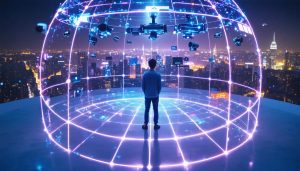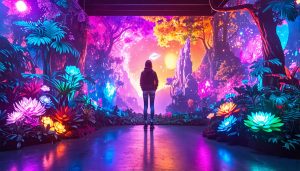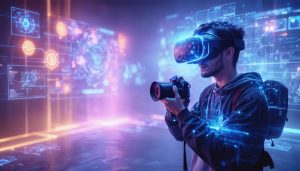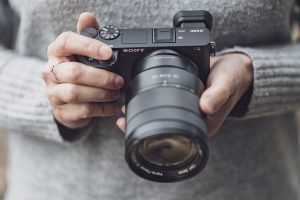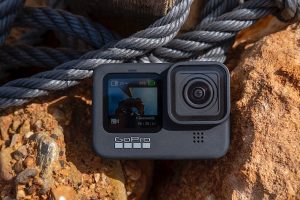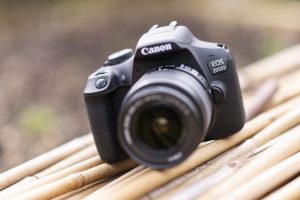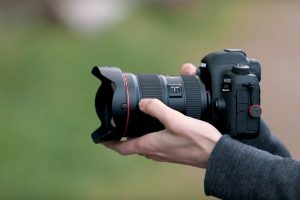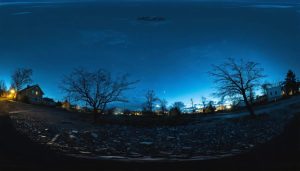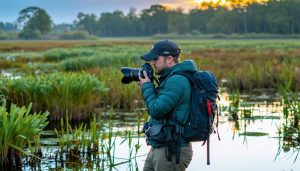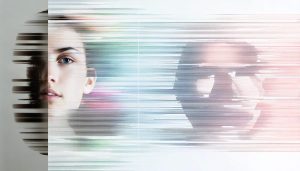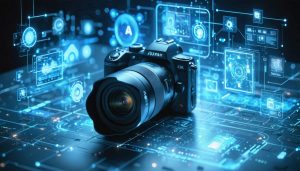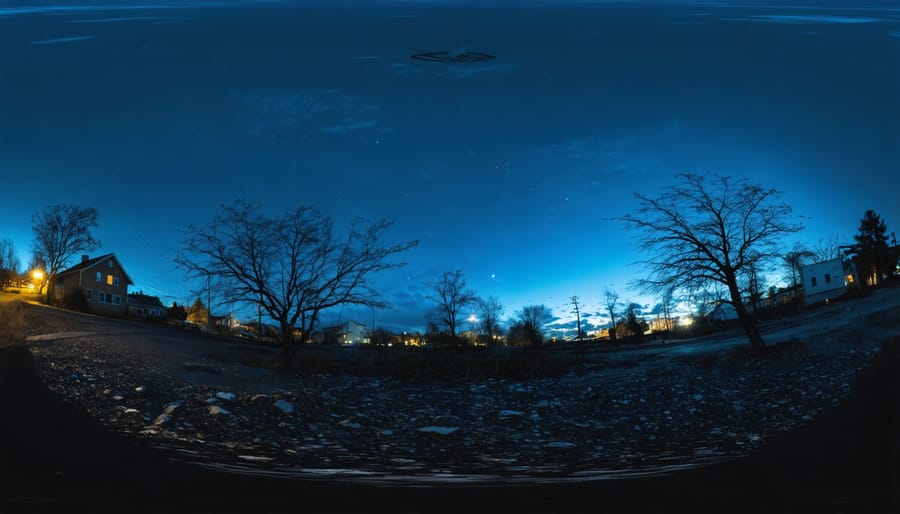
Revolutionizing surveillance and immersive content creation, 360-degree night vision cameras merge cutting-edge optical technology with panoramic imaging to capture complete environmental awareness in near-total darkness. These sophisticated systems combine multiple infrared sensors, advanced image processing, and seamless stitching algorithms to deliver crystal-clear, full-sphere visibility that transforms how we monitor, document, and experience nocturnal environments. Whether employed in security installations, wildlife observation, or VR content creation techniques, these cameras overcome traditional night vision limitations by eliminating blind spots and providing unprecedented situational awareness. Their ability to simultaneously capture and process infrared light from every direction makes them invaluable tools for professionals requiring comprehensive nocturnal monitoring capabilities, while their integration with modern VR platforms opens new possibilities for immersive nighttime experiences.
How 360-Degree Night Vision Cameras Work
Sensor Technology and IR Illumination
At the heart of modern 360-degree camera technology lies sophisticated sensor arrays specifically designed for low-light performance. These cameras typically employ multiple high-sensitivity CMOS sensors, each optimized to capture light in challenging conditions. What sets night vision capabilities apart is the integration of advanced IR (infrared) illumination systems.
Most 360-degree night vision cameras feature built-in IR LEDs strategically positioned around the camera body. These LEDs emit infrared light at wavelengths between 850-940nm, invisible to the human eye but perfectly detectable by the specialized sensors. The 940nm wavelength is particularly popular as it eliminates the red glow commonly seen in traditional night vision systems.
The sensors themselves are enhanced with microlens arrays and back-illuminated technology, maximizing their light-gathering capabilities. Many models now incorporate dual native ISO functionality, allowing them to switch between different sensitivity levels seamlessly. This results in cleaner low-light footage with minimal noise, even in near-total darkness.
The IR illumination system typically operates in zones, with different LEDs activating based on the scene’s requirements. Advanced models feature adaptive IR technology that automatically adjusts illumination intensity and coverage patterns, ensuring consistent exposure across the entire 360-degree field of view while optimizing power consumption.
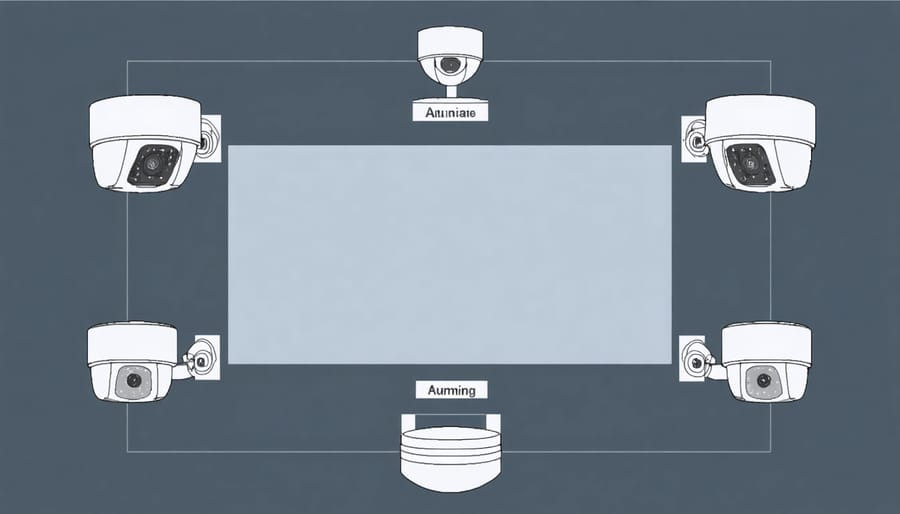
Image Stitching in Low-Light Conditions
Image stitching in low-light conditions presents unique challenges that require sophisticated algorithms and careful hardware coordination. When multiple camera feeds need to be combined in dark environments, the process becomes more complex due to noise, reduced detail, and potential variations in exposure between different sensors.
The key to successful night-time image stitching lies in the pre-processing phase. Each camera feed first undergoes noise reduction and contrast enhancement before the stitching process begins. Advanced systems employ real-time HDR (High Dynamic Range) techniques to balance exposure differences between adjacent cameras, ensuring smooth transitions in the final 360-degree image.
Modern 360-degree night vision cameras use overlapping fields of view between adjacent sensors, typically 10-20% overlap, to create reliable reference points for stitching. These overlap zones are particularly crucial in low-light conditions where distinctive features might be harder to identify. The stitching software looks for matching patterns in the infrared spectrum, where night vision sensors operate most effectively, rather than relying solely on visible light features.
To maintain image quality during stitching, the cameras synchronize their exposure settings and gain levels. This coordination ensures consistent brightness and contrast across the entire panorama, preventing visible seams or patches in the final output. Some advanced systems even employ machine learning algorithms to predict and compensate for potential stitching artifacts that commonly occur in low-light conditions.
Optimizing Night Vision for VR Environments

Camera Placement and Setup
Optimal placement of your 360-degree night vision camera is crucial for achieving comprehensive surveillance and quality footage. Start by mounting the camera at a height of 8-12 feet from the ground, which provides an ideal vantage point while keeping the device out of easy reach. The camera should be centered in the area you want to monitor, typically in the middle of a room or at the intersection of multiple pathways outdoors.
Consider the lighting conditions in your environment. While these cameras excel in low-light situations, avoid positioning them directly facing bright light sources, as this can create glare and potentially damage the infrared sensors. For indoor installations, mount the camera on a stable ceiling surface away from air vents and heating systems that might cause vibrations.
When setting up your camera, ensure it’s perfectly level using a bubble level tool. This is essential for proper image stitching and preventing distortion in the final footage. Pay attention to the camera’s IP rating if installing outdoors – position it under eaves or use weather-protective housing in exposed areas.
For power and connectivity, plan your cable routing carefully. Keep cables concealed and protected, using conduit where necessary. If using a wireless model, ensure it’s within strong Wi-Fi range and consider using a Wi-Fi extender if needed.
Remember to test your camera’s coverage during both day and night conditions, adjusting the position if necessary to eliminate any blind spots in the 360-degree field of view.
Post-Processing Techniques
Post-processing plays a crucial role in transforming raw night vision footage into immersive VR experiences. When working with 360-degree night vision cameras, several techniques help enhance image quality and viewer comfort during VR content creation.
Noise reduction is particularly important, as night vision sensors often introduce digital artifacts in low-light conditions. Advanced algorithms can intelligently analyze adjacent frames to distinguish between genuine detail and unwanted noise, resulting in cleaner footage while preserving important visual information.
Color correction helps achieve more natural-looking scenes, even when working with infrared footage. Many photographers use selective coloring to maintain the dramatic night vision effect while adding subtle color elements where appropriate. This hybrid approach creates more engaging VR experiences without sacrificing the unique atmosphere of night vision imagery.
Stabilization is another critical aspect, as any camera shake becomes particularly noticeable in VR environments. Modern post-processing tools offer specialized 360-degree stabilization that smooths out movement while maintaining proper spatial relationships throughout the sphere.
For optimal results, consider working with HDR merging techniques to combine multiple exposures, especially in scenes with varying light levels. This helps maintain detail in both the darkest and brightest areas of your footage, creating a more balanced and comfortable viewing experience in VR headsets.
Common Challenges and Solutions
Shooting 360-degree night vision content comes with its unique set of challenges, but understanding these common issues and their solutions can help you capture stunning footage. One of the most frequent hurdles is uneven lighting distribution across the full sphere, which can create dark spots or inconsistent exposure. To address this, consider using multiple infrared illuminators strategically placed around your shooting area to ensure uniform coverage.
Image noise is another significant challenge, especially in extremely low-light conditions. While it’s tempting to increase ISO sensitivity, this often results in grainy footage. Instead, opt for longer exposure times when possible, and use a stable mounting system to prevent motion blur. For moving subjects, consider using noise reduction software during post-processing.
Stitching errors become more pronounced in night vision footage due to the limited visual information available. To minimize these issues, ensure your camera system is properly calibrated and maintain adequate overlap between sensors. Some photographers find success by adding subtle infrared markers in the scene to help the stitching software identify common points.
Battery life can be particularly challenging as night vision sensors and multiple cameras consume significant power. Always carry backup batteries and consider external power solutions for extended shooting sessions. Additionally, lens fogging can occur due to temperature differences, so using anti-fog solutions or lens warmers is recommended for consistent results.
Real-World Applications
Security and Surveillance
The implementation of 360-degree night vision cameras in modern security and surveillance has revolutionized how we protect spaces and monitor activity. These advanced systems excel in providing comprehensive coverage with zero blind spots, making them invaluable for both residential and commercial applications. When integrated with smart security systems, they offer unprecedented situational awareness and monitoring capabilities.
One of the most significant advantages is their ability to capture complete panoramic footage in low-light conditions. Instead of using multiple traditional cameras to cover different angles, a single 360-degree night vision camera can monitor an entire area. This not only reduces installation costs but also simplifies the monitoring process for security personnel.
These cameras are particularly effective in large spaces like warehouses, parking lots, and retail environments, where traditional security cameras might miss critical events in their blind spots. The night vision capability ensures continuous surveillance regardless of lighting conditions, while the 360-degree view allows security operators to track movement across an entire space seamlessly.
Modern systems also incorporate advanced features like motion detection, automated tracking, and instant alerts. When suspicious activity is detected, the camera can automatically focus on the area of interest while maintaining peripheral awareness. This combination of comprehensive coverage and intelligent monitoring makes 360-degree night vision cameras an essential component in contemporary security infrastructure.
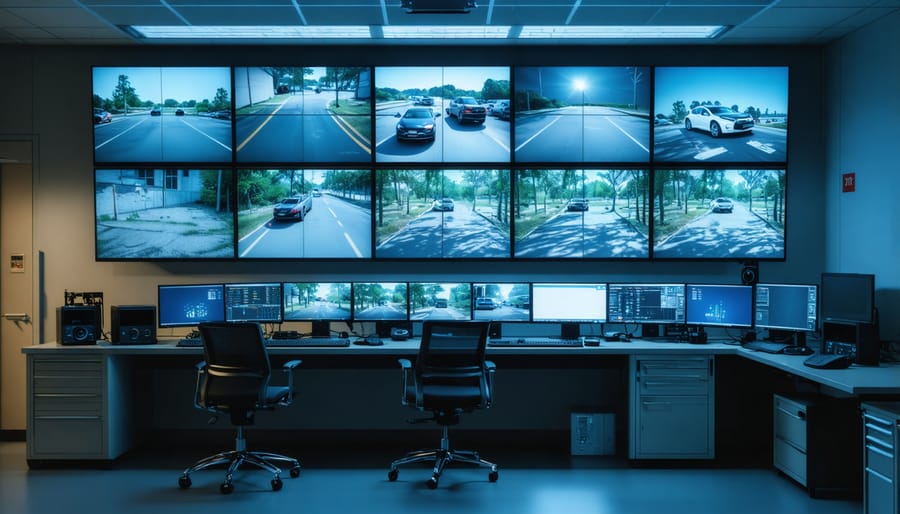
Creative and Entertainment Uses
The creative potential of 360-degree night vision cameras has revolutionized entertainment and artistic expression across multiple mediums. In filmmaking, these cameras enable directors to capture immersive nocturnal scenes without traditional lighting setups, creating an authentic nighttime atmosphere while maintaining visibility and detail. Documentary filmmakers particularly benefit from this technology when recording nocturnal wildlife or urban nightlife without disrupting natural behaviors.
Gaming developers have embraced these cameras to create more realistic environmental scans for night-based gameplay sequences. By capturing real-world locations in low-light conditions, they can build more authentic virtual environments that maintain accurate shadows and depth perception, enhancing player immersion.
The technology has also opened new possibilities for interactive VR experiences, allowing creators to design compelling nighttime scenarios for virtual tours, educational programs, and entertainment installations. Museums have begun utilizing these cameras to offer after-hours virtual visits, while theme parks create haunted attractions with unprecedented levels of detail in dark conditions.
Artists are pushing creative boundaries by incorporating 360-degree night vision footage into mixed media installations, creating pieces that challenge viewers’ perceptions of darkness and light. The technology’s ability to reveal hidden details in low-light environments has sparked a new genre of experimental photography and video art, where creators explore the unseen aspects of nocturnal landscapes and urban spaces.
Future Developments
The future of 360-degree night vision cameras is shaping up to be incredibly exciting, with several groundbreaking developments on the horizon. One of the most promising advancements is the integration of AI-powered image processing, which will dramatically improve low-light performance while reducing noise and artifacts. These smart algorithms will be able to predict and fill in missing visual information, creating clearer and more detailed nighttime footage.
Quantum imaging sensors are another game-changing technology in development. These ultra-sensitive sensors can detect individual photons, potentially revolutionizing how we capture images in near-total darkness. When combined with 360-degree capabilities, these sensors could offer unprecedented nighttime visibility with minimal light pollution.
Virtual reality integration is also evolving rapidly. Next-generation 360-degree night vision systems are expected to feature real-time depth mapping and environmental understanding, creating more immersive and accurate VR experiences in low-light conditions. This technology will be particularly valuable for military training, security applications, and even nighttime virtual tourism.
Manufacturers are working on miniaturization techniques that will make these cameras more portable and energy-efficient. We’re likely to see compact 360-degree night vision cameras that can be worn as accessories or integrated into everyday devices like smartphones and smart glasses.
The development of hybrid sensing technologies is another exciting frontier. By combining traditional night vision with thermal imaging and radar sensing, future cameras will provide comprehensive environmental awareness in any lighting condition. These multi-modal systems will offer users the ability to switch between different viewing modes or see combined data overlays in real-time.
Looking further ahead, researchers are exploring bio-inspired designs based on the night vision capabilities of nocturnal animals. These innovations could lead to more natural and efficient ways of capturing low-light imagery, potentially transforming how we experience and interact with the world after dark.
As we’ve explored throughout this article, 360-degree night vision cameras represent a remarkable fusion of innovative technology and practical functionality. These versatile devices have revolutionized how we capture and experience nocturnal environments, offering unprecedented coverage and clarity in low-light conditions.
The combination of infrared sensors, advanced image processing, and panoramic capabilities has opened up exciting possibilities across various fields. From enhanced security surveillance and wildlife observation to immersive virtual reality experiences and creative night photography, these cameras continue to push the boundaries of what’s possible in low-light imaging.
What makes these systems particularly impressive is their ability to provide comprehensive situational awareness without compromising image quality. The seamless integration of multiple sensors and sophisticated algorithms ensures consistent coverage across the entire 360-degree field of view, eliminating blind spots that traditionally plagued night vision systems.
Looking ahead, the future of 360-degree night vision technology appears incredibly promising. As sensors become more sensitive, processing power increases, and AI-driven image enhancement techniques evolve, we can expect even better performance in challenging lighting conditions. The growing accessibility of these devices to both professionals and enthusiasts suggests we’re only beginning to scratch the surface of their potential applications.
Whether you’re a security professional, wildlife photographer, or creative content creator, 360-degree night vision cameras offer an exciting tool that combines comprehensive coverage with exceptional low-light performance. As the technology continues to mature, we can look forward to even more innovative uses and improvements in this fascinating field.


